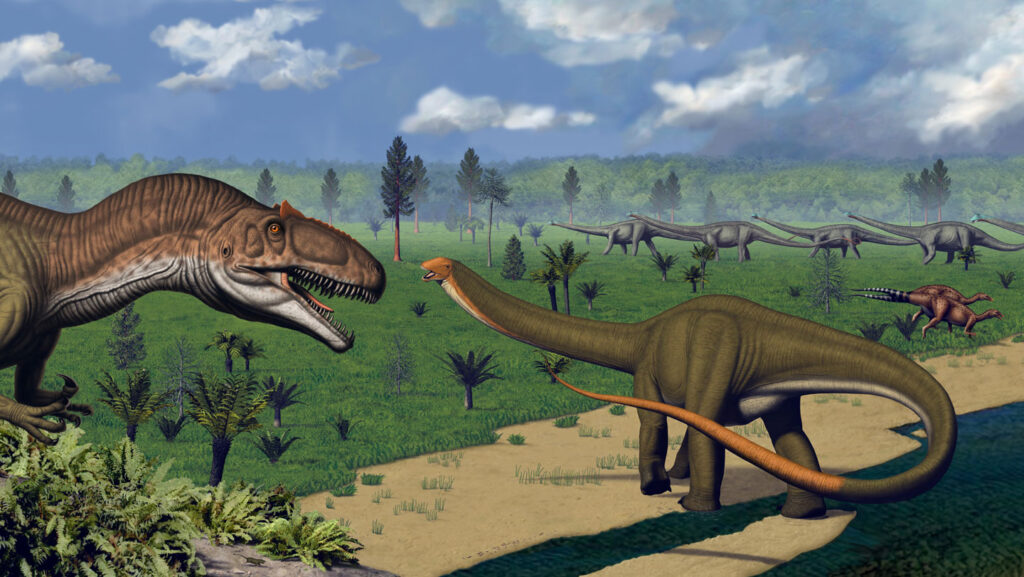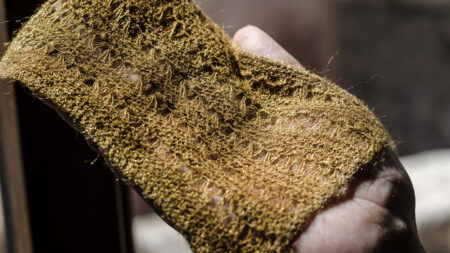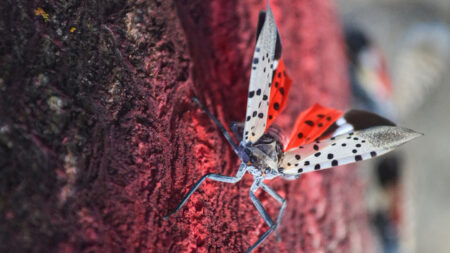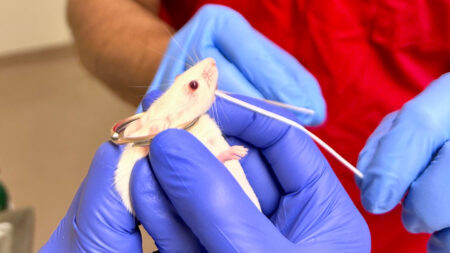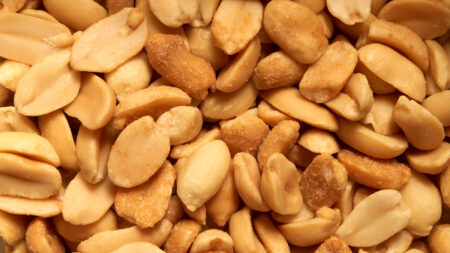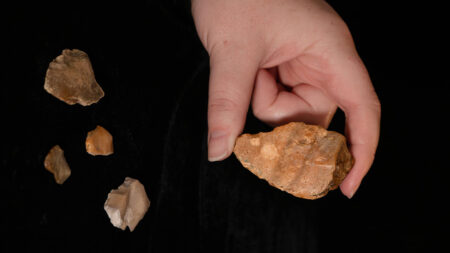Some dinosaurs were fussy eaters.
Certain herbivorous dinosaurs preferred specific parts of plants, challenging long-standing assumptions about their diets, a study of fossilized dino teeth shows. The analysis of calcium isotopes in 150-million-year-old tooth enamel reveals that diet may have depended less on the size of dinosaurs and more about the nutritional value and texture of their food, researchers report in the Oct. 1 Palaeogeography, Palaeoclimatology, Palaeoecology.
“My big takeaway is that the herbivores had different diets, and it is likely that the parts of a plant that these animals eat [are] a more significant driver than height,” says Liam Norris, a paleontologist at the Texas Science & Natural History Museum in Austin. “So, if they are eating softer parts like leaves versus eating twigs or maybe bark, that looks like it is more significant.”
Norris and colleagues compared calcium isotope levels in dinosaur enamel with the levels in enamel from modern herbivores. The team found that the towering sauropod Camarasaurus — from the Late Jurassic period, between about 164 million and 145 million years ago, long thought to feed primarily from treetops — ate more woody plants and twigs than expected. But the smaller, beaked Camptosaurus preferred softer plant parts such as leaves and buds.
This finding goes against common wisdom that large dinosaurs had the pick of what they ate.
“People have been looking at dinosaur teeth for many decades, and this is a nice new method for looking at the same kind of problem,” says dinosaur expert Paul Barrett of the Natural History Museum in London, who was not involved in the study. “This would be most useful in those cases where dinosaur diets are a bit ambiguous and we don’t know too much about what’s going on.”
Norris’ team also measured calcium isotope levels in the teeth of two meat-eaters and compared them with modern carnivorous animals. The team’s results suggest that the crocodile-like Eutretauranosuchus ate mostly fish, and the fierce theropod Allosaurus dined mostly on the flesh of other dinosaurs — but not as much on their bones, as did the later theropod Tyrannosaurus rex, which lived during the Late Cretaceous between 68 million and 66 million years ago.
The researchers gathered some of their samples from the Carnegie Quarry, a famous fossil site in Utah’s Dinosaur National Monument. The site lies within the vast Morrison Formation, first discovered in the 1870s, which has yielded a trove of Late Jurassic fossilized dinosaur bones. Some of the teeth had already been removed and classified by earlier researchers, but others Norris and colleagues sampled directly from the quarry wall itself.
While some earlier studies examined calcium isotopes in fossilized teeth from the wider Morrison Formation, Norris says, the new study is the first to examine dinosaur teeth unearthed only at the Carnegie Quarry site — believed to have once been a riverbed or oxbow lake where dinosaur bones piled up.
The method of determining diets from calcium isotopes in tooth enamel is well established, but this is one of its first uses on dinosaur teeth that are so old, says paleontologist Michael Benton, who was not involved in the study. “I think this is an innovative method, and technically quite difficult,” says Benton, of the University of Bristol in England.
Barrett notes that the study establishes the measurement of calcium isotopes in dinosaur tooth enamel as a valid scientific inquiry. “This is nice confirmation that these kinds of chemical signatures are preserved in the teeth for so long.”
Read the full article here







